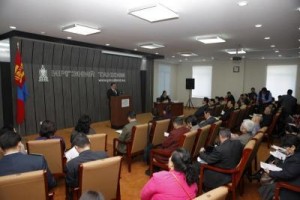Bulgan Batdorj, MASc candidate in Mining Engineering // March 23, 2015
Sub-national reporting is demanded by NGOs, activists and companies despite great difficulties to get there. Since the announcement of the sub-national reporting concept, many countries were excited about the idea and planned to embrace it. But until now there is not a common model which can be applied or adopted by countries. Many countries are having difficulties implementing the sub-national reporting due to many challenges, such as tax governance, politics, lack of public awareness, local government’s capacity and many more. Yet, the local NGOs’ argue that EITI sub-national reporting is the only necessary dialogue to amend the broken trust between local citizen, corporation and the local government.
According to the study carried out by the Goldman Sachs in 2008, the single largest category which caused the industry slow down and significant increase in the cost was the stakeholder – related risks. Among those the local protest is claimed to be one of the biggest reasons that mine projects are being jeopardized. The extractive industry is starting to recognize the costs of conflicts with local communities and more than ever the emphasis is given to building positive relationship with the local community and aboriginal community. The cost of conflict is not bared by the company only. The community is as much affected as the corporations if the conflict is not resolved. Depending on the level of the conflict and the size of the project, the potential to damage to the regional or national economy will materialize. This is why, it is rather important for the stakeholders to find platform to have a meaningful dialogue to prevent or resolve the conflicts.
In conclusion, the sub-national reporting is not making all the senses to all the stakeholders and there are suspicions that this is just another “condition” from the World Bank to developing countries. But according to the local activists and civil societies that local reporting and local transparency will enable the informed local participation in the decision making. But many recognize that EITI grants the people the lens to look through but accountability has to go parallel to make changes in corruption and poverty.
